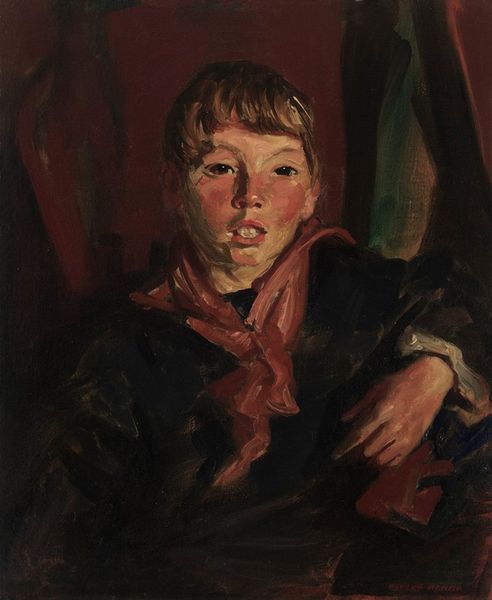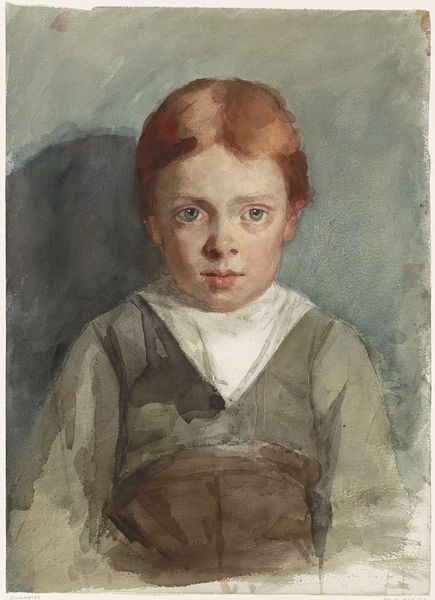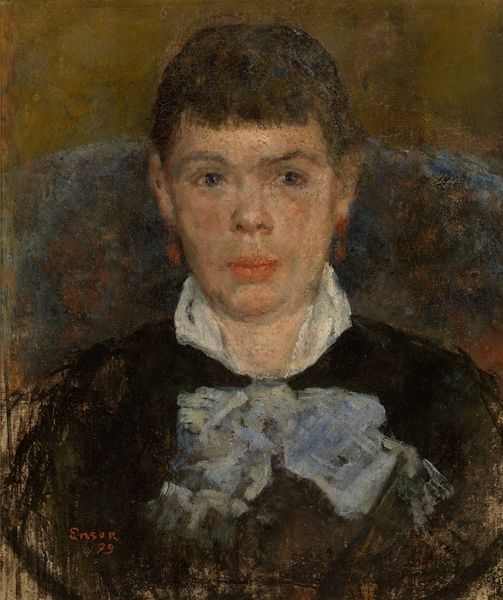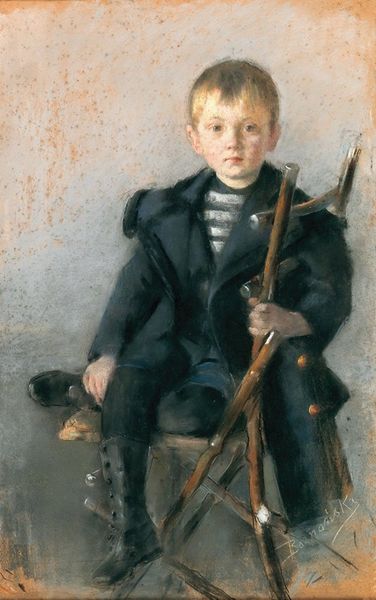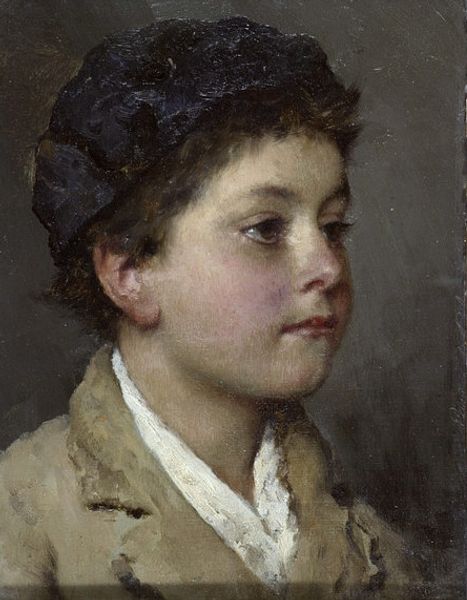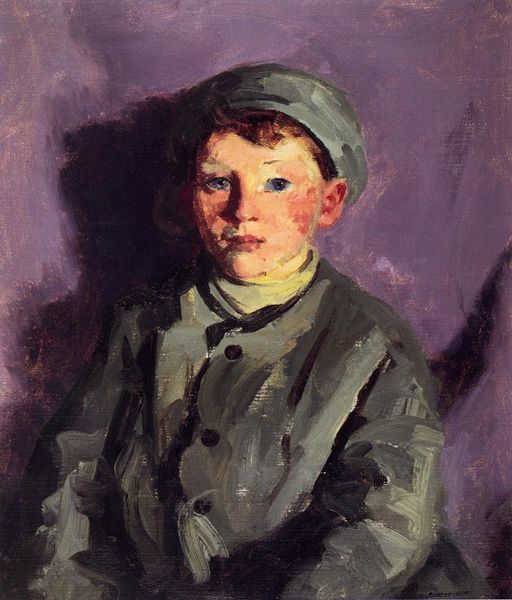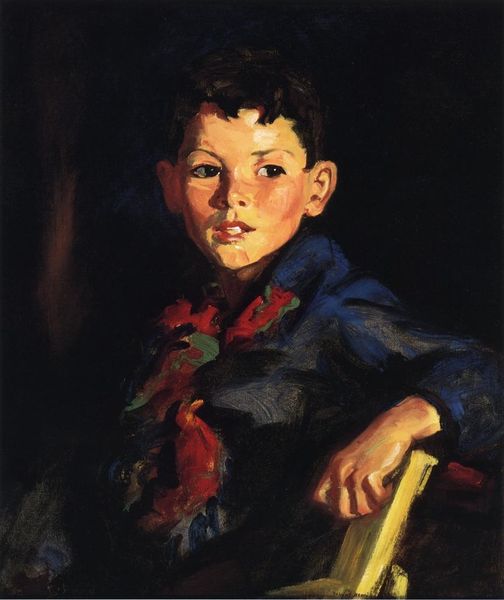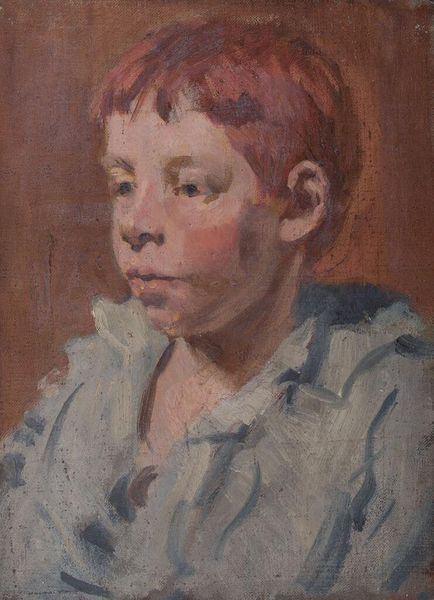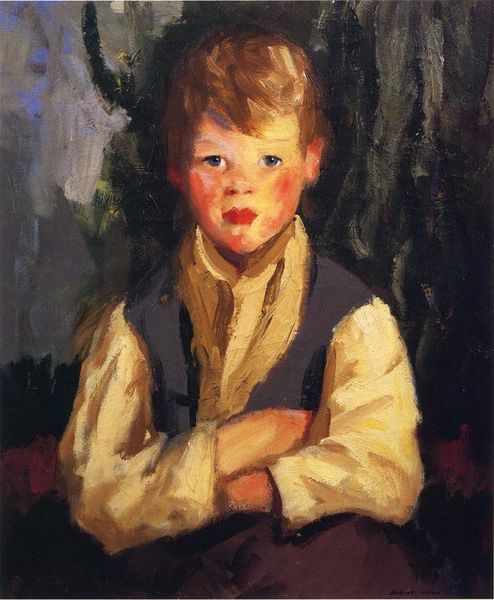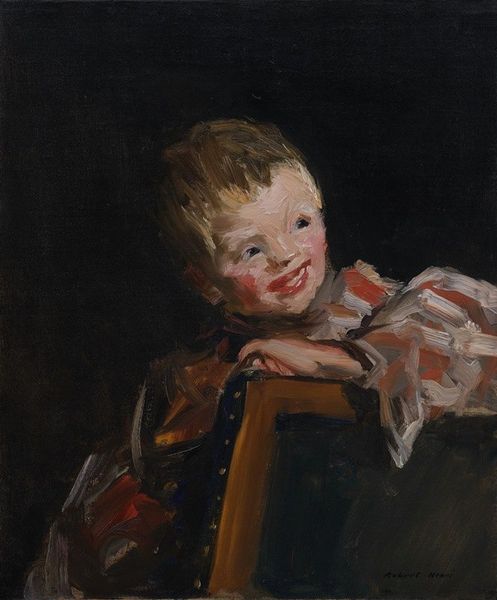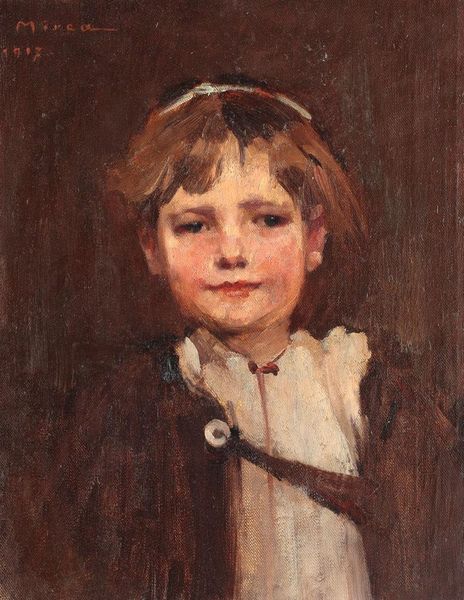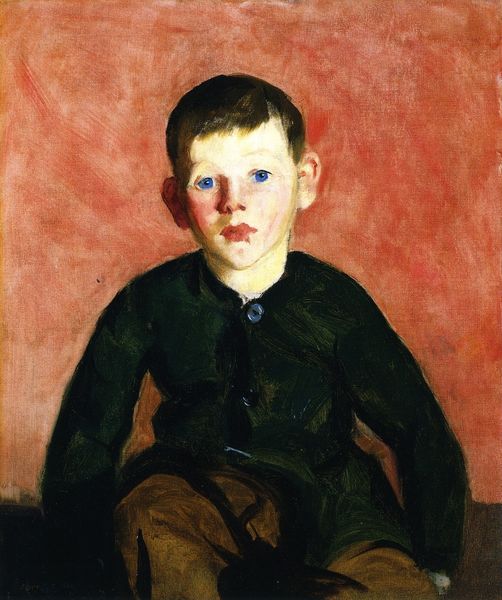
painting, oil-paint, impasto
#
portrait
#
figurative
#
painting
#
oil-paint
#
charcoal drawing
#
impasto
#
portrait drawing
#
genre-painting
#
realism
Copyright: Public Domain: Artvee
Editor: Frank Duveneck's "The Whistling Boy," painted in 1872 with oils, immediately strikes me as a study in contrasts. The dark background makes the boy’s figure seem to almost emerge from the shadows. How do you interpret this work in terms of its visual symbols? Curator: Consider the whistle itself. In many cultures, whistling has associations. What comes to mind for you? Editor: Well, on the surface, it seems straightforward, an innocent moment, perhaps a sign of youthful exuberance. But I suppose it could also hint at something more, like signaling. Curator: Precisely! It is useful to dig below surface assumptions when thinking about historical iconography. What of the boy's clothing, then, with that vaguely historical vest, offset by the open collar? And does that dark background, the very thing you noticed first, create more meanings for you now? Editor: Now that you point it out, it's as if Duveneck is positioning the boy, not just as an individual, but as a kind of type, almost theatrical. The clothing suggests a character, maybe from a play or folk tradition. It’s not just a portrait of a boy. Curator: Exactly. He captures something about youth, archetype, the timeless image of boyhood caught mid-tune, yet it is a boy facing modernization in Europe in the 1870s, too, one assuming various cultural roles. What’s been unearthed here for you? Editor: I’m fascinated by how Duveneck uses these seemingly simple objects—the whistle, the clothes—to give this painting so many layers of meaning and implication beyond what initially meets the eye. Curator: Indeed. The cumulative cultural power of visual symbols never ceases to inspire me.
Comments
No comments
Be the first to comment and join the conversation on the ultimate creative platform.
